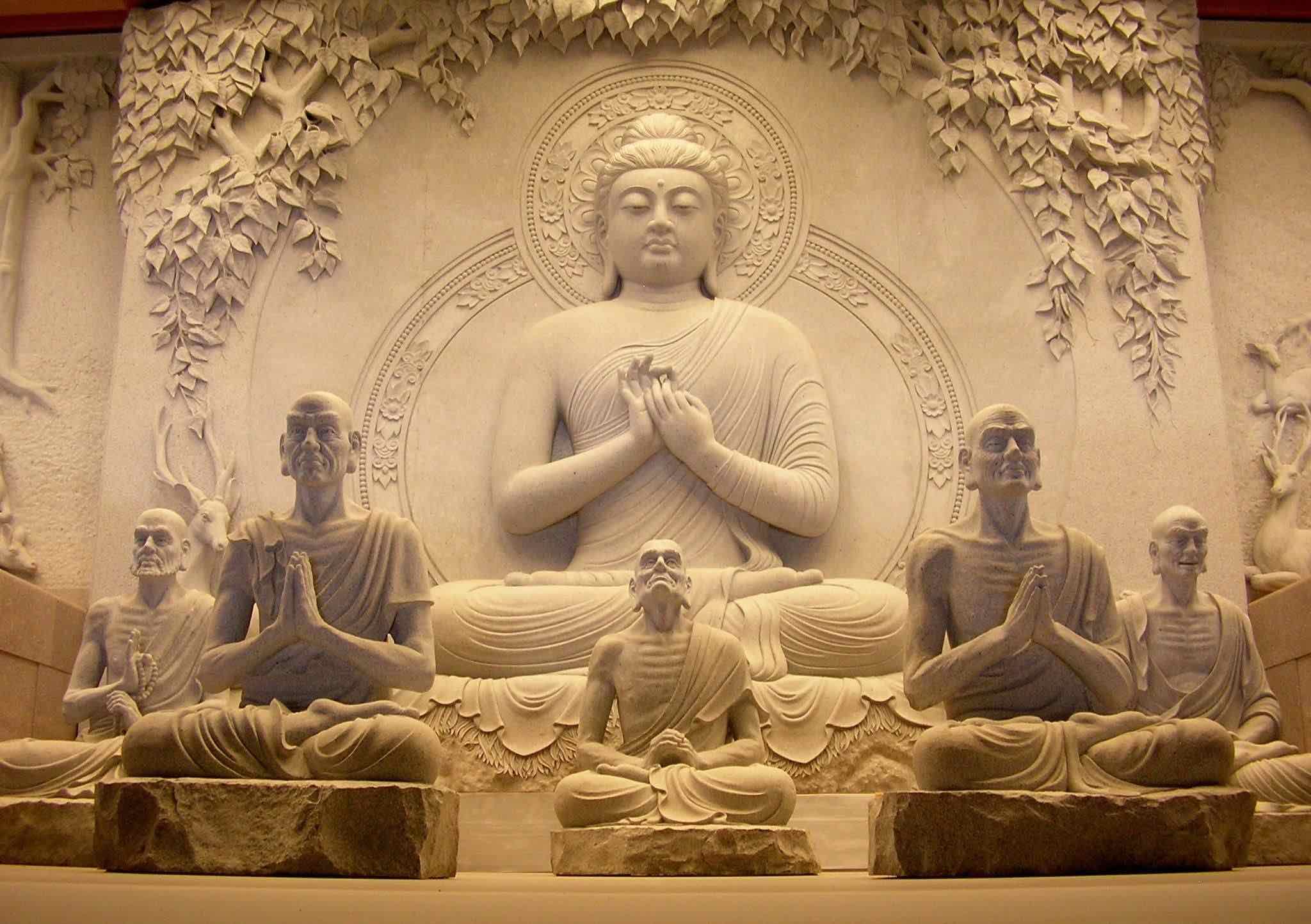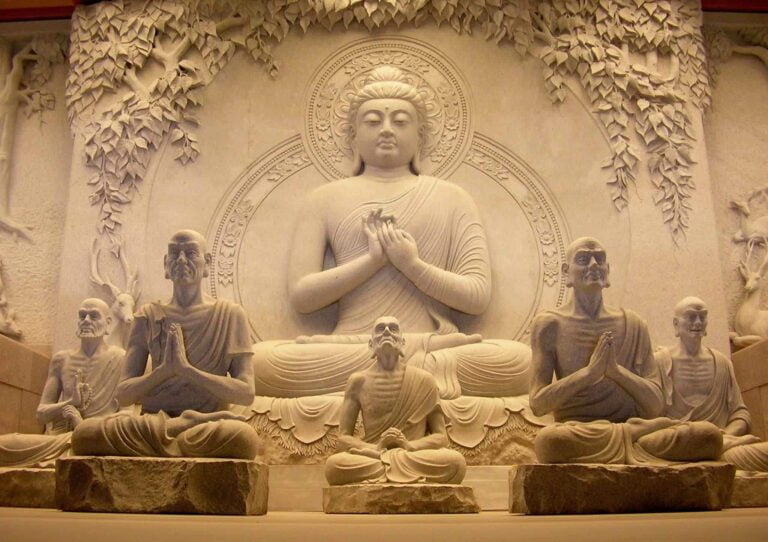There are different opinions about the age at which Shakyamuni Buddha attained enlightenment, with some saying he was 30 years old and others saying he was 35. His first answer upon awakening was “all sentient beings are equal.” This may seem easy to understand, but what the Buddha meant by “equality” was not superficial equality, but the inherent wisdom and virtue that all sentient beings possess, which is the same as that of the Buddha (this will be further explained in the introduction to Buddhism).
This means that as long as one follows the practice of Buddhism, one can attain the state of perfect wisdom and become a Buddha. Therefore, after attaining enlightenment, the Buddha did not immediately enter Nirvana, but instead began a 50-year (or 45-year) journey of spreading the Dharma (the teaching of awakening), proclaiming the truth he had realized everywhere he went. The Buddha first arrived in the city of Varanasi and found the five former ascetics who had abandoned him during his ascetic practices. At first, they agreed not to meet the Buddha, but when Shakyamuni Buddha arrived at Deer Park, they spontaneously came out to greet him because of his majestic presence. The Buddha informed them that he had already attained enlightenment and was invited to give them a teaching. During the three months they stayed in Deer Park, the Buddha gave three rounds of teachings on the Four Noble Truths. After hearing the teachings, Venerable Kaundinya achieved liberation and became an Arhat. The other four also achieved liberation in succession. These five were the first five bhikkhus (monks) to become disciples of the Buddha after he attained enlightenment, and they were also the Buddha’s earliest disciples. This teaching was the first time the Buddha proclaimed the Dharma to the world after his awakening, and it is known in Buddhist history as the “first turning of the wheel of Dharma.” This was also when the first Sangha organization was established.
Noun Definitions:
Nirvana:
Old translations include “extinction”, “passing away”, “cessation”, “non-birth”, “non-action”, “bliss”, “liberation”, etc. It means the extinction of the cycle of birth and death and the crossing of the flood of birth and death. It is also interpreted as non-birth and non-extinction and is now translated as “complete enlightenment”.
Merit and adornment:
One of the two types of adornments, which refers to the cultivation of good deeds to adorn the fruit of Buddhahood.
Four Noble Truths:
Also known as the Four Truths or Four Realities, they are the truths seen by the saints. The Four Truths are suffering, its cause, its cessation, and the path leading to its cessation.
Arhat:
A fruit position in the Theravada school of Buddhism, also translated as “destroyer of enemies”, meaning the destruction of the thieves of afflictions, or “worthy one”, meaning one who receives offerings from humans and gods, or “non-birth”, meaning the attainment of Nirvana and no longer being subject to birth and death.
Liberation:
The state of being free from bondage and gaining freedom. It is also known as Nirvana.



